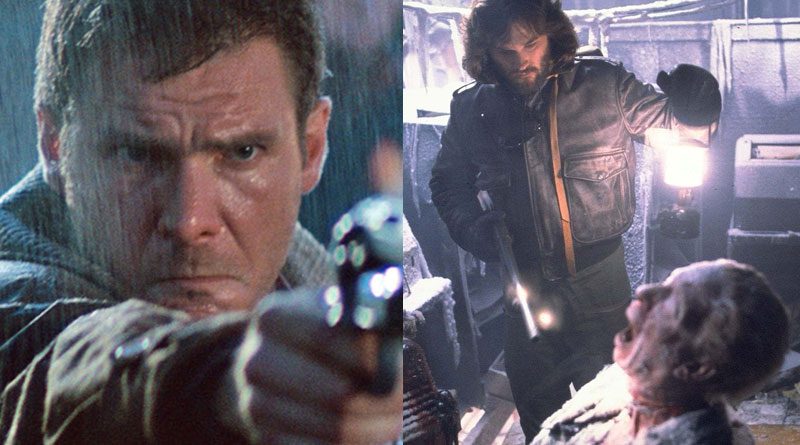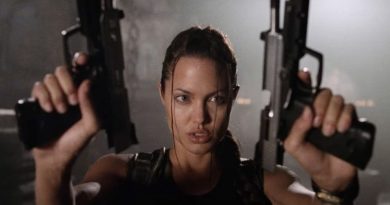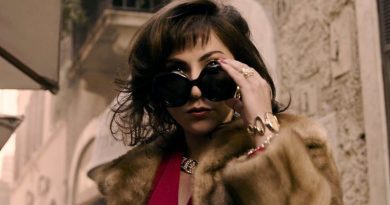Blade Runner & The Thing at 40: From Box-Office Flops To Sci-Fi Masterpieces
Forty years ago on June 25, 1982, there were two sci-fi movies competing against each other during the same opening weekend at the US box office. Those movies in question were Blade Runner and The Thing. The former was a dystopian sci-fi movie from the same director — Ridley Scott — who gave us the commercially successful Alien back in 1979. It had Harrison Ford in the lead role, who was already a major box-office draw, thanks to his iconic roles as Han Solo in Star Wars (1977) and The Empire Strikes Back (1980) and Dr Henry “Indiana” Jones Jr. in Raiders of the Lost Ark (1981).
The latter, in the meantime, was a sci-fi horror that reunited John Carpenter and Kurt Russell for the third time following their collaborations in the made-for-television Elvis (1979) and of course, the cult hit Escape from New York in 1981. Both movies featured great on-screen and off-screen talents and yet, neither of them could overcome Steven Spielberg’s E.T. the Extra-Terrestrial to take over the top spot at the box office.
Audiences at the time just couldn’t get enough of that movie, which practically ruled the summer-movie season in 1982. It remained at No. 1 for the third consecutive weekend while Blade Runner and The Thing could only settle for No. 2 (US$6.1 million) and No. 8 (US$3.1 million) spots respectively. They eventually died a quick death at the box office, making only respectively paltry amounts of US$27.5 million and US$19.6 million.
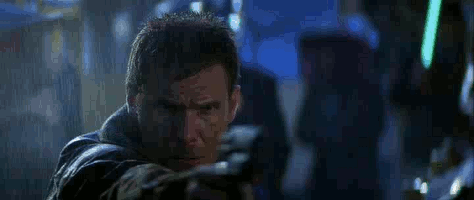
Today, Blade Runner and The Thing may have been seen as sci-fi masterpieces but that wasn’t the case at the time of their releases. Critics weren’t too kind to both movies and so did the audiences and yes, this may seem hard to believe. But keep in mind that (most) audiences’ mindsets were different back in 1982. It only took several years down the road before these movies were rediscovered and re-evaluated, particularly after they hit home videos. Ridley Scott, of course, had famously reworked Blade Runner in 1992 and released it under Blade Runner: The Director’s Cut. But it wasn’t until 2007 that he finally put together his definitive version under the title of Blade Runner: The Final Cut, which was easily the best one of them all.
I remember when I first watched the 1982 theatrical version of Blade Runner on VHS back in the ’90s and I didn’t really like it at first. It was slow and too downbeat for its own good. Harrison Ford, who plays a former cop-turned-blade runner (a term referring to a bounty hunter tasked with hunting down rogue replicants) Rick Deckard, did an awful job providing the voiceover narration. It sure felt like he was reading his lines off of cue cards that sounded both monotonous and worst, cringeworthy. For the record, even Ford himself hated his own voiceovers but too bad he was contractually obligated to do so.
Then, there’s the happy ending that concluded the theatrical version of Blade Runner. It was awkwardly misplaced and didn’t fit well with the rest of the brooding tone and visuals that came before it. Of course, it took me a few revisits that I started to appreciate Blade Runner over time.
While the voiceover narration and the aforementioned ending remain unforgivably bad, the movie’s overall visual aesthetic is truly a work of art. The way Scott and his crew, notably visual effects wizard Douglas Trumbull as well as production designer Lawrence G. Paull and art director David Snyder established the dystopian look of 2019 Los Angeles — all dark and misty with constant rain and of course, neon signs and billboards that illuminated the buildings and the cityscape.
The juxtaposition of light and darkness contrasting with each other evokes the distinctive 1940s film-noir style both visually and even thematically, with the latter can be evidently seen in Harrison Ford’s sullen anti-hero protagonist as Rick Deckard. The classic film-noir element wouldn’t be complete without the obligatory presence of a femme fatale character and here, we have Sean Young as Rachael, complete with bumper bangs-and-victory rolls hairstyle and padded skirt suit that looks like she’s straight out from the 1940s era.
Speaking of film noir, Jordan Cronenweth’s atmospheric cinematography is one for the ages, where he successfully captures the feel and look of a sci-fi noir set in the future, making good use of lighting, smoke and rain. His cinematography approach in Blade Runner remains a watershed in his career. He would go on to lense other movies like Peggy Sue Got Married (1986) and State of Grace (1990) before his final work ended with Final Analysis in 1992 (he died in 1996 at the age of 61 due to Parkinson’s disease).
Blade Runner is also notable for becoming the early trendsetter in popularising the cyberpunk subgenre — a term which was first coined by writer Bruce Bethke in his 1983 sci-fi short story called Cyberpunk published in Amazing Stories magazine. The cyberpunk element that dominated Blade Runner at the time subsequently influenced many other filmmakers, notably Katsuhiro Otomo in Akira (1988) as well as Mamoru Oshii in Ghost in the Shell (1995) and (then) Wachowski brothers in The Matrix (1999).
And let’s not forget about Vangelis, who sadly passed away at the age of 79 last month. The legendary Greek composer already had a memorable Oscar-winning score for his work in 1981’s Chariots of Fire. His follow-up work in Blade Runner is just as unforgettable — the synth-heavy score that can be heard right from the mesmerising opening sequence. An establishing shot that begins with flares vented from the oil refineries echoing in the murky sky amidst the illuminated Los Angeles cityscape. A flying car passes by and then, a bolt of lightning before we see a reflecting close-up shot of an eye and a monumental pyramid-like building of Tyrell Corporation as Vangelis’ score builds up steadily to a soaring height.
Credits also go to Hampton Fancher and David Peoples, both of which adapted the movie from Philip K. Dick’s 1968 novel Do Androids Dream of Electric Sheep? The prominent themes of humanity and identity give the movie a beating heart and this can be seen in Rutger Hauer’s role as Roy Batty. He may have been a ruthless antagonist in the movie (the scene where he casually breaks some of Deckard’s fingers still resonates even today). But he also displays human emotions, even though he’s a replicant. Of course, it helps that Hauer’s cold but sympathetic performance made Roy Batty such an iconic character. Not to mention the poignant “tears in rain” monologue, which lasted 50 seconds and Hauer himself partly contributed to the writing of the speech himself.
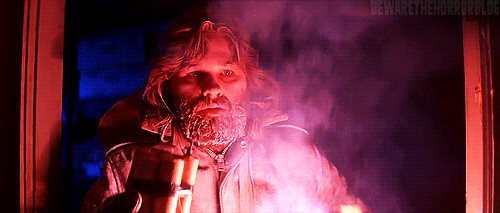
Moving on is John Carpenter’s The Thing, a remake of 1951’s The Thing from Another World — both of which were based on John W. Campbell Jr.’s 1938 novella Who Goes There? Looking back at the movie today, it was kind of baffling to see the studio (Universal Pictures) chose to release the movie in June. The very month where audiences would prefer sticking with the feel-good alien movie in E.T. the Extra-Terrestrial than watching a sci-fi outing that was too pessimistic, violent and nasty.
Ill-fated release date aside, The Thing subsequently became a cult classic as the years went by. Ennio Morricone’s legendary minimalist score (ironically, it actually earned a Razzie nomination for Worst Musical Score (!), making me wonder whether the members got shit in their ears while listening to the music) that opens the movie evokes a foreboding sense of dread from the get-go, beginning with the shot of mysterious men in the helicopter trying to shoot a dog running through the wide-open frozen Antarctic landscape. Carpenter and screenwriter Bill Lancaster made the right choice not to succumb to expository scenarios, where the plot is kept to bare essentials.
And that is a few men — among them includes Kurt Russell’s helicopter pilot R.J. MacReady and Keith David’s chief mechanic Childs — from the U.S. research station find themselves stuck in Antarctica, completely incommunicado from the outside world. From there, Carpenter gradually builds the suspense as the men try to figure out what’s going on around them. The tension escalates as the movie progresses further right until we finally get to see one of the dogs reveal its shape-shifting self — a result of vividly-realised creative effects from Rob Bottin, who previously collaborated with Carpenter in The Fog (1980).
Believe it or not, Bottin was only 22 years old when he and his team worked on the effects tirelessly around the clock. The creature effects were all meticulously done in a practical manner using lots of rubbers, prosthetics, hydraulics, puppetry and other items. One of the effects-heavy moments that still holds up till today features a defibrillator scene, where Dr Copper (Richard Dysart) tries to defibrillate the unconscious Norris (Charles Hallahan) but the device ends up penetrating through his chest cavity and has monstrous teeth biting off Dr Copper’s arms.
All these took Bottin a whopping 57 weeks, where he ended up in a hospital due to exhaustion and pneumonia. Such a commitment and technical brilliance should have earned him an Oscar nomination for Best Makeup or Best Visual Effects but the movie was criminally snubbed either way. And if you must know, the Best Makeup award went to Jean-Jacques Annaud’s Quest for Fire while E.T. the Extra-Terrestrial won for the latter.
I also love how Carpenter use these parasitic shape-shifting aliens which can imitate anyone to evoke an increasing sense of fear, paranoia and trust issues as MacReady and the rest begin to doubt each other — which one of them are humans and which are not. This leads to one of the movie’s most suspenseful moments — a scene where MacReady decided to take a blood test using everyone’s blood samples and a piece of copper wire heated with a flamethrower. If one of their blood samples reacts with the heated wire, the person is “the thing”.
Both Blade Runner and The Thing have their respective follow-ups decades later, where the latter came out with a 2011 prequel nobody asked for. It was also called… The Thing (?) with Dutch filmmaker Matthijs van Heijningen Jr. making his Hollywood directorial debut. The movie starred Mary Elizabeth Winstead and Joel Edgerton and the story takes place in the winter of 1982 before the events of the first film. It was more of the same but poorly conceived with lacklustre CGI and jerky camerawork.
The former, however, has a better result in the form of Denis Villeneuve’s Blade Runner 2049, which was sadly underappreciated at the time of its release in 2017.

